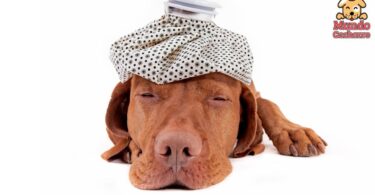A dog’s coat is much more than just a layer covering its body; it is a direct reflection of its health and well-being. Maintaining a healthy and shiny coat is essential to ensure the happiness and comfort of your canine companion. In addition, good coat care can prevent various diseases and skin problems that affect many dogs today. 
Indice
The importance of a healthy coat
A well-groomed coat not only improves your dog’s appearance, but also serves vital functions. The hair protects the animal’s skin against external factors such as sun, cold and bacteria. It also helps regulate body temperature, keeping the dog cool in summer and warm in winter.
On the other hand, an unkempt coat can be indicative of internal health problems. Excessive hair loss, dandruff or loss of luster can be signs of nutritional deficiencies, allergies or even stress.
Therefore, it is essential to pay attention to the condition of your pet’s coat and act quickly in the event of any abnormalities.
Proper nutrition for shiny hair
Diet plays a crucial role in the health of your dog’s coat. A balanced diet rich in essential nutrients is the key to maintaining strong, lustrous hair. Incorporating foods rich in omega-3 and omega-6 fatty acids, such as salmon or flaxseed oil, can significantly improve coat quality.
In addition, high quality protein is essential for coat growth and repair. Make sure your dog’s diet includes lean meats, eggs and legumes.
Don’t forget to also offer vitamins and minerals, such as vitamin E and zinc, which contribute to skin and coat health.
Of course, consulting a veterinarian about the most appropriate diet for your dog is always a good idea. Each breed and each individual has specific nutritional needs, and a professional will be able to guide you in the best possible way.
Brushing routines: more than aesthetics
Regularly brushing your dog’s coat is an essential practice that goes beyond keeping it beautiful. Brushing helps remove dead hair, prevents the formation of knots and distributes the natural oils that keep the skin moisturized. Depending on your dog’s coat type, the frequency and type of brush may vary.
For example, long-haired dogs require more frequent brushing with specific tools to avoid tangles. On the other hand, short-haired breeds also benefit from regular brushing, as it helps remove dirt and improves blood circulation in the skin.
In addition, brushing time is an excellent opportunity to strengthen the bond with your pet. Make this routine a pleasant and relaxing time, rewarding your dog for good behavior and making sure he feels comfortable at all times.
Appropriate baths and products
Bathing is another fundamental aspect of dog coat care. The use of suitable products that are respectful of canine skin is essential to avoid irritation and allergies. Opt for specific shampoos for dogs, preferably hypoallergenic and with natural ingredients that nourish the coat.
The frequency of baths will depend on your dog’s lifestyle and coat type. While some dogs may need a monthly bath, others may be kept clean less frequently. It is important not to overdo bathing, as excessive washing can remove natural oils from the skin and cause dryness and flaking.
In addition to shampooing, consider using conditioners or natural oils to provide extra moisture to the coat. These products can be especially useful in times of shedding or if your dog’s coat is particularly dry or brittle.
Identification and treatment of common problems
Despite all the care, it is possible that your dog may develop coat or skin problems that require special attention. The presence of fleas, ticks or fungal infections are common problems that affect the health of the coat.
Regular coat checks are essential to quickly identify any signs of infestation or disease. If you notice redness, wounds, hair loss in specific areas or your dog scratches frequently, it is time to visit your veterinarian.
There are numerous treatments and products on the market to combat these problems, but prevention is still the best strategy. Maintaining good hygiene, using deworming products regularly and ensuring proper nutrition are effective measures to prevent most coat-related problems.
The influence of the seasons on the coat
The seasons of the year also influence the condition and needs of your dog’s coat. During the spring and fall, many dogs experience increased hair loss due to seasonal shedding. In these seasons, it is advisable to intensify brushing routines to better manage the amount of loose hair.
In summer, protecting your dog from excessive heat is essential. Although it may be tempting to cut the coat too short, it is important to remember that the coat also protects against the sun’s rays.
Opt for moderate cuts and always provide shady areas and cool water to keep your pet comfortable.
During the winter, the coat acts as a natural coat that keeps your dog warm. Make sure their coat is well groomed and free of moisture to prevent colds and other health complications.
Conclusion: comprehensive coat care
In short, dog coat care is an integral aspect of your dog’s health and well-being. A combination of good nutrition, proper hygiene routines and preventive veterinary care will ensure that your dog has a healthy coat and is happy and comfortable at all times.
Remember that each dog is unique and may require specific care depending on its breed, age and lifestyle. Watch your pet’s needs closely and don’t hesitate to seek professional advice when necessary.
At the end of the day, the time and effort you put into caring for your dog’s coat will be rewarded with a healthy, vibrant pet.







